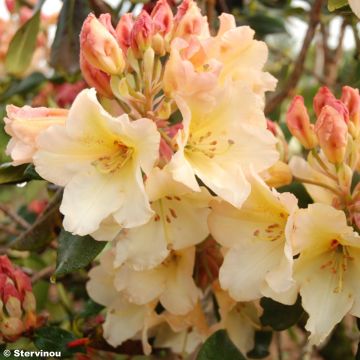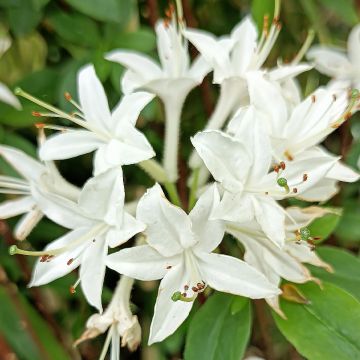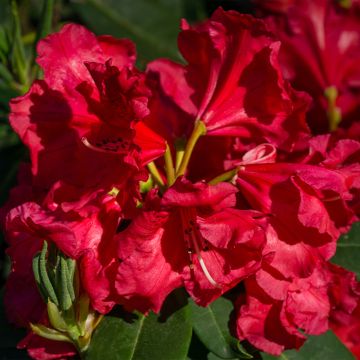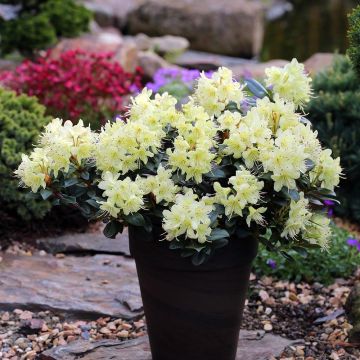

Rhododendron Red Eye


Rhododendron Red Eye
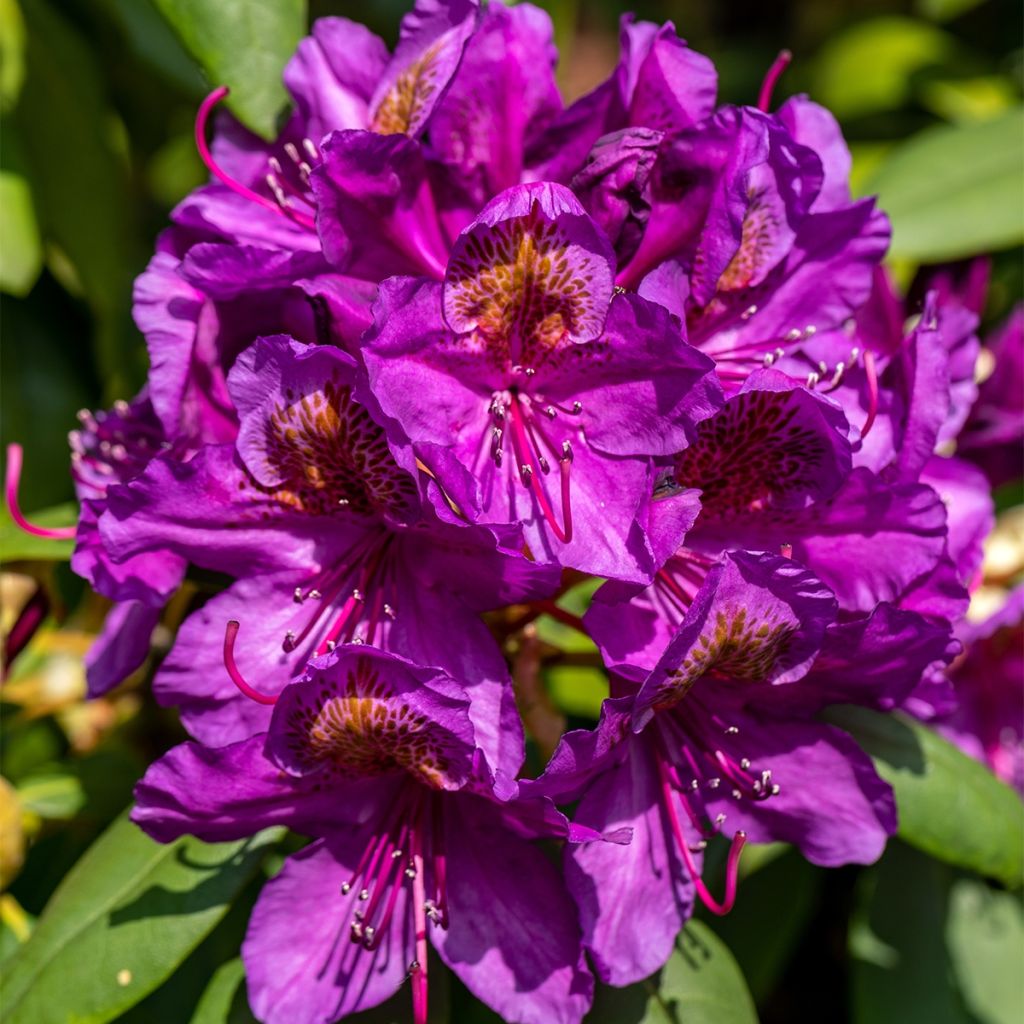

Rhododendron Red Eye
Rhododendron Red Eye
Rhododendron Red Eye
Rhododendron
After 6 months of planting, I observed excellent and immediate growth, and I am eagerly looking forward to the flowering.
brigitte, 18/11/2024
Special offer!
Receive a €20 voucher for any order over €90 (excluding delivery costs, credit notes, and plastic-free options)!
1- Add your favorite plants to your cart.
2- Once you have reached €90, confirm your order (you can even choose the delivery date!).
3- As soon as your order is shipped, you will receive an email containing your voucher code, valid for 3 months (90 days).
Your voucher is unique and can only be used once, for any order with a minimum value of €20, excluding delivery costs.
Can be combined with other current offers, non-divisible and non-refundable.
Home or relay delivery (depending on size and destination)
Schedule delivery date,
and select date in basket
This plant carries a 24 months recovery warranty
More information
We guarantee the quality of our plants for a full growing cycle, and will replace at our expense any plant that fails to recover under normal climatic and planting conditions.
Would this plant suit my garden?
Set up your Plantfit profile →
Description
The 'Red Eye' Rhododendron is a tall variety, which offers stunning flowering in April-May. Its pink-fuchsia flowers with shades of mauve or purple have a brown-red to golden spot. Gathered in large clusters, they catch the eye from meters away, making this Rhododendron a remarkable attraction in the garden. A plant of the heather family, it appreciates acidic soils and dislikes limestone. It prefers partial shade, but depending on the climate, it can be planted in the sun in northern regions, provided the soil remains moist, or in shade in the south.
Rhododendrons belong to the Ericaceae family, which offers us numerous ornamental plants (Erica, Enkianthus, Kalmia, Zenobia, Oxydendrum...) as well as some fruiting plants (Strawberry Tree, Blueberry...). The Rhododendron genus is vast, mainly including bushes but also trees over 10m (33ft) tall, generally evergreen but sometimes deciduous, especially in Azaleas, a horticultural term which are actually Rhododendrons from a botanical point of view.
The 'Red Eye' Rhododendron is a hybrid obtained in the United States around 1980 by Willard & Gladys Swenson, in their nursery in Eugene (Oregon). It is a large plant, reaching about 3m (10ft) tall and 2m (7ft) wide, and will therefore find its place preferably isolated, beside large trees or in the background of an ericaceous bed. The flowering of this large Rhododendron is unquestionably its strong point, offering a dazzling spectacle in April-May. Its large clusters composed of 10 to 15 flowers form bouquets of a colour as brilliant as it is difficult to define, in shades of pink-fuchsia to purple mauve, with a centre blending red, brown and golden into a central spot. These sumptuous inflorescences, further enhanced by the dark green foliage, are eye-catching in spring.
Fairly easy to grow, this variety requires a moist and acidic soil, and above all not limestone. In a neutral soil (pH around 6.5-7), it is possible to dig a hole and add ericaceous compost and leafmould to mix with the existing soil to accommodate it. In less sunny climates, it can be planted in the sun provided the soil remains moist in summer (while being well-drained to avoid water saturation in winter). But it will thrive better in partial shade in warmer climates. Once the right location is found, it will need to be watered regularly in the first years and always monitored in summer afterwards as the root system of Rhododendrons is quite shallow. It is therefore important to never let the soil dry out.
The 'Red Eye' Rhododendron, an ericaceous plant, will find its place in partial shade in moist, humus-rich and well-drained soil, with an acidic pH. Hardy in all regions of France, it will fully thrive in a humid and moist climate. It can be used as a standalone plant or in a bed, especially with other heath plants. You can associate it with many other flowering species and by choosing staggered bloom times, you can enjoy it all year round! The Witch Hazels will open the show, with their delicate spider-like yellow, orange or red flowers, in the middle of winter. The indispensable Camellias will follow suit in late winter, with their magnificent simple or double blooms in all colors, as the range is wide. Then our little Rhododendron will take over and transform spring into a fireworks display of colors. In May-June, the superb Kalmias, or Mountain Laurels, will ensure the spectacle, before passing the baton to Hydrangeas to bloom in summer. The summer heathers, like the Silver Knight Heather, with its silver foliage and lavender-coloured flowers, will bring joy until late in the season, preceding the varieties of Camellia sasanqua, the Autumn Camellia, which actually blooms more in winter.
Report an error about the product description
Rhododendron Red Eye in pictures




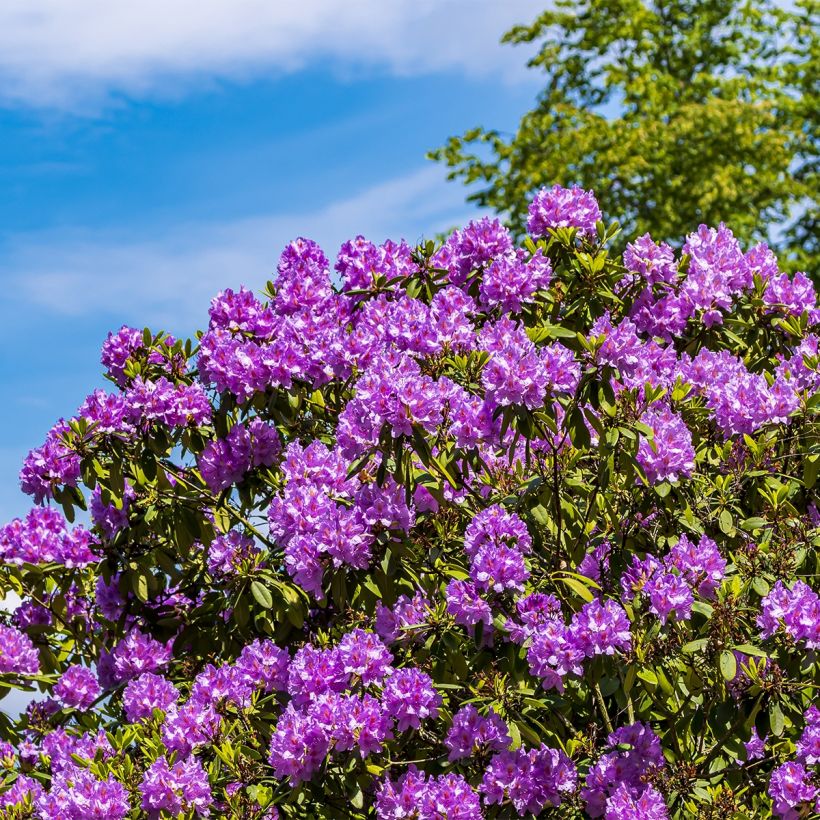

Plant habit
Flowering
Foliage
Botanical data
Rhododendron
Red Eye
Ericaceae
Rhododendron
Cultivar or hybrid
Other Rhododendron and Azalea
View all →Planting and care
Plant the Rhododendron 'Red Eye' in a semi-shade position, protected from cold and drying winds, in a moist, humus-rich, and light soil with an acidic tendency. Like all plants in the heather family, it does not tolerate limestone soils or heavy soils saturated with water in winter. Dig a hole three times larger than the pot volume. Soak the root ball in lime-free water and plant the bush at the level of the collar, in a mixture composed of leaf compost, gravel or pumice, and topsoil. Water generously and keep the soil moist in summer.
Azaleas and Rhododendrons have a shallow and relatively small root system. As a result, they are sensitive to long periods of drought. That is why it is recommended to enrich the soil with humus beforehand and to water abundantly during dry periods. Additionally, this root system is not very strong, which is why it is essential to lighten heavy soils with draining materials (gravel, pumice, clay pellets) at planting. Apply a mulch of shredded pine bark around the base of the bush every spring to maintain soil moisture while preserving an acidic pH.
Maintenance consists of removing faded flowers in summer and pruning out any dead branches. Azaleas and Rhododendrons can sometimes be attacked by weevils that eat the edges of leaves and rootlets, as well as the infamous "rhododendron beetle" which does not often cause severe damage. Yellowing of leaves (chlorosis) in Rhododendrons indicates poor iron assimilation from the soil and can lead to the premature death of the plant. While limestone is often the cause, poorly-drained soil or a deeply planted root ball can also explain the phenomenon.
Planting period
Intended location
Care
-
, onOrder confirmed
Reply from on Promesse de fleurs
Similar products
Haven't found what you were looking for?
Hardiness is the lowest winter temperature a plant can endure without suffering serious damage or even dying. However, hardiness is affected by location (a sheltered area, such as a patio), protection (winter cover) and soil type (hardiness is improved by well-drained soil).

Photo Sharing Terms & Conditions
In order to encourage gardeners to interact and share their experiences, Promesse de fleurs offers various media enabling content to be uploaded onto its Site - in particular via the ‘Photo sharing’ module.
The User agrees to refrain from:
- Posting any content that is illegal, prejudicial, insulting, racist, inciteful to hatred, revisionist, contrary to public decency, that infringes on privacy or on the privacy rights of third parties, in particular the publicity rights of persons and goods, intellectual property rights, or the right to privacy.
- Submitting content on behalf of a third party;
- Impersonate the identity of a third party and/or publish any personal information about a third party;
In general, the User undertakes to refrain from any unethical behaviour.
All Content (in particular text, comments, files, images, photos, videos, creative works, etc.), which may be subject to property or intellectual property rights, image or other private rights, shall remain the property of the User, subject to the limited rights granted by the terms of the licence granted by Promesse de fleurs as stated below. Users are at liberty to publish or not to publish such Content on the Site, notably via the ‘Photo Sharing’ facility, and accept that this Content shall be made public and freely accessible, notably on the Internet.
Users further acknowledge, undertake to have ,and guarantee that they hold all necessary rights and permissions to publish such material on the Site, in particular with regard to the legislation in force pertaining to any privacy, property, intellectual property, image, or contractual rights, or rights of any other nature. By publishing such Content on the Site, Users acknowledge accepting full liability as publishers of the Content within the meaning of the law, and grant Promesse de fleurs, free of charge, an inclusive, worldwide licence for the said Content for the entire duration of its publication, including all reproduction, representation, up/downloading, displaying, performing, transmission, and storage rights.
Users also grant permission for their name to be linked to the Content and accept that this link may not always be made available.
By engaging in posting material, Users consent to their Content becoming automatically accessible on the Internet, in particular on other sites and/or blogs and/or web pages of the Promesse de fleurs site, including in particular social pages and the Promesse de fleurs catalogue.
Users may secure the removal of entrusted content free of charge by issuing a simple request via our contact form.
The flowering period indicated on our website applies to countries and regions located in USDA zone 8 (France, the United Kingdom, Ireland, the Netherlands, etc.)
It will vary according to where you live:
- In zones 9 to 10 (Italy, Spain, Greece, etc.), flowering will occur about 2 to 4 weeks earlier.
- In zones 6 to 7 (Germany, Poland, Slovenia, and lower mountainous regions), flowering will be delayed by 2 to 3 weeks.
- In zone 5 (Central Europe, Scandinavia), blooming will be delayed by 3 to 5 weeks.
In temperate climates, pruning of spring-flowering shrubs (forsythia, spireas, etc.) should be done just after flowering.
Pruning of summer-flowering shrubs (Indian Lilac, Perovskia, etc.) can be done in winter or spring.
In cold regions as well as with frost-sensitive plants, avoid pruning too early when severe frosts may still occur.
The planting period indicated on our website applies to countries and regions located in USDA zone 8 (France, United Kingdom, Ireland, Netherlands).
It will vary according to where you live:
- In Mediterranean zones (Marseille, Madrid, Milan, etc.), autumn and winter are the best planting periods.
- In continental zones (Strasbourg, Munich, Vienna, etc.), delay planting by 2 to 3 weeks in spring and bring it forward by 2 to 4 weeks in autumn.
- In mountainous regions (the Alps, Pyrenees, Carpathians, etc.), it is best to plant in late spring (May-June) or late summer (August-September).
The harvesting period indicated on our website applies to countries and regions in USDA zone 8 (France, England, Ireland, the Netherlands).
In colder areas (Scandinavia, Poland, Austria...) fruit and vegetable harvests are likely to be delayed by 3-4 weeks.
In warmer areas (Italy, Spain, Greece, etc.), harvesting will probably take place earlier, depending on weather conditions.
The sowing periods indicated on our website apply to countries and regions within USDA Zone 8 (France, UK, Ireland, Netherlands).
In colder areas (Scandinavia, Poland, Austria...), delay any outdoor sowing by 3-4 weeks, or sow under glass.
In warmer climes (Italy, Spain, Greece, etc.), bring outdoor sowing forward by a few weeks.
































